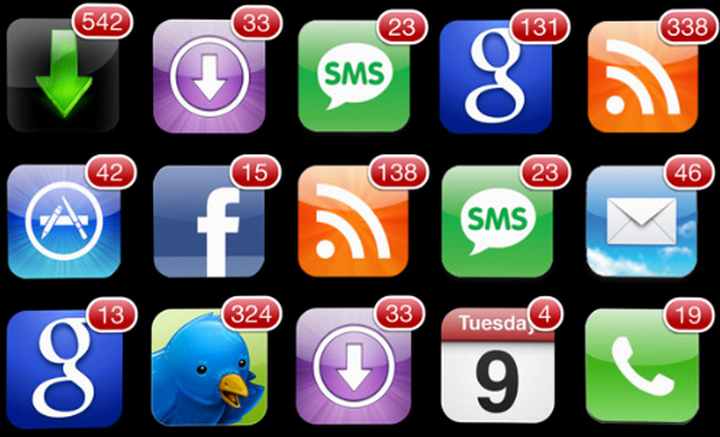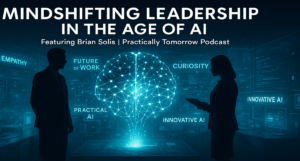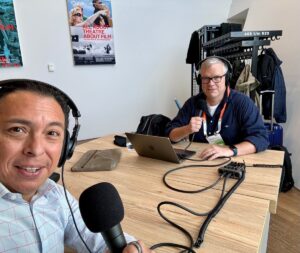Guest post by Jason Shah is the founder and CEO of Do (do.com), a collaboration platform that helps people run productive meetings and do work they love.
TL;DR Summary: Apple Watch will make work easier and more impactful. Through a constrained interface, powerful one-tap actions, and intimate data it will collect, people will be better at their jobs and form new bonds with coworkers previously not possible.
There is a widespread myth that a new device will only add more clutter–more noise–to both our work lives and our personal lives. More notifications, more distractions, and more intrusion. This is an understandable assumption, given the bombardment of new devices and new apps in the 21st century along with a real sense that we’re addicted to the Internet. But sometimes we forget that a fundamental objective of technology is to help us. While it may seem counter intuitive today to believe that strapping a screen onto your wrist could reduce distractions in the office and simultaneously make you more productive, the Apple Watch will do exactly that.
Take this example: When an employee gets a vibrating message notification—personal or professional—they must pull out their smartphone and, upon unlocking it, are instantly “pulled into a merciless vortex of attention suck.” On the Apple Watch, however, notifications are, by definition, quickly addressed: the primary action is either a canned response or a dismiss option. Both are specific and swift. When I get my Dropbox file notification, I’ll acknowledge it and confidently swipe it out of my life. Unlike on my phone, my Apple Watch swipe will not automatically open the Dropbox app as well as a Pandora’s box of distractions (or the Pandora app for that matter!). I will not check Facebook since the app is nowhere in sight and my psychological triggers will not onset an overwhelming sensation of FOMO the second I’m not holding my phone in my hand.
Constrained interactions with notifications will reduce the cost of distractions, even if they are more frequent and ubiquitous
Apple’s iOS operating system has evolved in that we can now deal with an individual notification without unlocking the phone, which was a big step forward, but not big enough (think: swipe to dismiss a notification). All unread notifications are still visible when a user checks his/her phone as opposed to only the most recent and/or relevant one.
This is problematic and here’s why:
Take a hypothetical situation where you check your phone after a flurry of notifications has accumulated. You want to followup on two of these notifications–say you want to respond to your mom’s text message and to star an email from your boss. You go to reply to your mom and, while doing that, you get a banner notification for another text message (you’re already in the messages app, so why not reply?). You then vaguely remember that there was something else you wanted to followup on, but cannot remember the specific notification. To make matters worse, you no longer have access to that initial list since you have already unlocked your phone. You forget to star your boss’s email and it falls through the cracks. This could have been easily avoided by dealing with notifications individually. Now imagine a (common) situation in which you want to follow up on more than two notifications. It would be far more efficient to deal with them one by one instead of as a large chunk, right?
On a 38mm or 42mm screen, dealing with a messy block of notifications is physically not possible. One notification. One action. One focus of attention. This is huge.
A constrained but powerful app means average employees turn into superheroes.
The obvious counterargument to all this is that the Apple Watch is too accessible. We fear that this seemingly innocuous device will allow technology to seep into areas of our lives which it should not (if this argument sounds familiar, that’s because it is). It is the same argument that was made before laptops took over desktop computers, before cell phones took over landlines, and before smartphones took over cell phones. Its most recent iteration is asking, “Why do I need a tablet if I have a laptop?” The response to this hackneyed objection is simple: regardless of whether one device does the same thing as another–just like the Apple Watch doesn’t seem to do anything you can’t do with your phone–product form factor makes a massive difference and will elevate the everyday worker into a superhero.
The limited interface of the Apple Watch forces developers to streamline their apps to enable only a few select actions. To make them count, these will be the most important actions one can take in an app. A small interface with all the power of a smartphone and the internet behind it means doing a lot with very little—a lot of bang for a little buck (even if you get the $10,000 Apple Watch!)
Like all good pieces of technology, this will not only have a significant impact on the CEOs and board members of the world, but will also empower the average employee. The average employee will be able to leverage the Apple Watch to perform tasks that are beyond what is expected of their position. Granting approval. Sending requests. Summoning information. Recording ideas. You name it. For example, today, distributing meeting notes would entail firing up an email client, knowing all the meeting attendees, asking and typing in all the email addresses one-by-one–all while trying to appear efficient and professional. However, one tap on your watch using an app can request a meeting agenda from tools like Do (Do.com) and another single tap can distribute it. In this way, the average employee both appears and is more efficient. The Salesforce Apple Watch app lets a salesperson report on quota while on the go between client meetings. Evernote lets you dictate a brilliant new marketing idea, so it doesn’t get lost to the blackhole of shower thinking. This is a sea-change in productivity.
Employee relationships and communication will be more impactful with the data and intimacy of the Apple Watch.
What’s more, the Apple Watch will allow us to connect with our coworkers better than ever before. As such a personal device, the intimate data it collects will know more and more about its user and it can then leverage that information to enable better team interactions. It knows can know who you work the most with, what you talk about with whom, how your heart rate and stress level react to being staffed on a project with Bob from accounting – you name it. One could foresee a situation where the Apple Watch informs someone trying to contact you that you are on a run and unable to answer. Further, when you are done your run, it could be set to automagically notify the person trying to contact you that you are now available to talk, all based on your physical activity. In the future, Sally will learn not to contact Bob on Wednesdays at 8pm because that’s when Bob likes to go on runs or spend time with his family.
This could help us, ultimately, make team communication between employees more efficient, more friendly, and more human. It could also help us make progress on the front of inundating users with a flood of notifications when they neglect their devices for a period of time.
The Apple Watch will usher in a new phase in the future of work.
Because of the limited physical real estate, the Apple Watch will streamline all actions–both from the developer’s end in terms of designing the app and from the user’s end in terms of engaging with it. This shiny computer on our wrist will make work more delightful, potentially reshaping employee engagement as we know it. Our intimate interaction with the Apple Watch may finally provide us with a tool to transcend the annoyances–to cancel out all the unproductive noise in the workplace–created by the very devices that came before it, and do work we love.









Am I the only one that compares the Apple Watch to the comic strip Dick Tracy watch from ages ago? I am a little grumping today I guess. Loved your perspective.
Ha – thanks Jim!
RE: Dick Tracy watch…no comment 🙂
This reads like a fluffy PR piece written by Apple to address the range of initially awkward reviews. Does this post really belong on this blog?
Ouch. Sorry Dan. I assure you I’m not an Apple employee, just an optimist 🙂
Apologies for the harsh delivery, Jason. This piece just felt like a major stretch, in just about every sense.
Ha, no problem. We all learn from different perspectives 🙂
I also think this I a commercial text…There would be even less distraction if you wouldn’t have any device interrupting your work at all! Even a swift swipe can consume all your attention for the moment…I believe in silent mode of my mobile and even my email postbox. That way I can work concentrated and quickly on my priority tasks.
Indeed, sometimes technology can just lead to more and more distractions…that being said, we are distracted at work plenty – so maybe new technologies and new processes and new forms of discipline can help us!
I wonder if this watch really will take off. I remember thinking that the ipad wouldn’t become popular but look at it now
Yeah – it’s hard to predict, I suppose. But the iPhone, the iPad, and perhaps now the Apple Watch, all have massive opportunities in the enterprise based on fundamentals – what the Apple Watch can do, business processes it can help, and so on. Thanks for reading!
Great article Dan! I personally don’t care for Apple products but I bet the watch will be seen on alot of arms soon even with the hefty price. Alot of other people just love Apple.
Indeed! Regardless of whether one likes Apple or not, the impact of a product like this has to be considered.